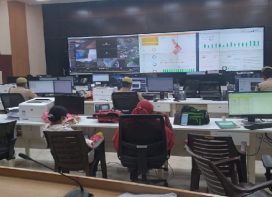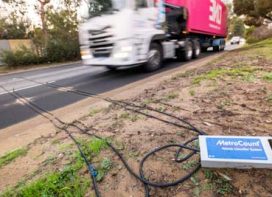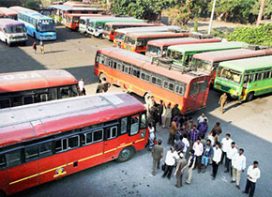So WRI plans. How does implementation take place after it has planned?
Embarq has been a well established programme of WRI for a long time globally. It is in South America, China, India, Turkey and a lot of places in the world. One of the good things about bringing it here is that Embarq brings in the best practices followed around the world. Earlier, most of the time people did not realise what was the best way to plan a BRTS. The reason why Ahmadabad worked so well is because the authorities listened to the best practices available in the world. So whether it was Embarq or any other body giving them the advice, they made an effort to understand it properly and implement it faithfully.
One of the problems that we find very often in India is that people think that they know best and they are experts but unless you really try to appreciate what has worked in the world and what has not worked, you will face roadblocks. For instance, some people still wonder about the reason behind keeping BRT bus stops at the centre of the road rather than on the side. They haven?t appreciated the advantages of putting the bus stop in the centre, and yes, it does create a slight problem because people have to move to the centre but that is something that you can regulate through people-crossings and signals.
How does Embarq take the policies further?
Embarq is trying to disseminate all the knowledge at any place in India where the authorities want to know more about it. Ahmedabad BRTS was a good example, now we are working in Mumbai, Indore, Jaipur, Naya Raipur and a whole bunch of cities which are interested in knowing more on the best practices for Bus Rapid Transit.
BRTS in Mumbai has been dragging for years. So, what is being done on it now?
We have asked Embarq to do a programme, a study for the Western Express Highway (WEH). WEH is a big transit corridor and buses run on it. We are studying ways to reorient the buses so that they get central lane priority, i.e., the stations come in the centre and it works like it works in Ahmedabad. The authorities are looking only at that one entire corridor of WEH, not the entire city. It is the most congested corridor, and is also the one which will be the most difficult to implement. But there are some redeeming features there which they hope to be able to build on. In any such effort, you need the support of the civic society, the police and the administration. If the effort is successful on WEH, they can replicate it on Eastern Express Highway and then on some other major roads in Mumbai. Since the road infrastructure is never designed from the point of view of the bus by the planners, we are trying to also get people to understand to look at the design from this point of view instead of the cars.
Planning a city is the most crucial part ? whether it is going to be a low carbon city or a high carbon city because the more people you move, the more carbon you spend.
What efforts do you need to make to get the WRI suggestions implemented properly by the administration? How does the process work?
It works differently in different places but essentially, we have tried to influence the central policy in the Ministry of Urban Development (MoUD) as they pay for buses and other transport infrastructure under JnNURM, etc. We look at the government policies and the type of conditions it puts on to the cities to avail of the grants for buying the buses. The other part is to approach the cities that haven?t shown interest in such efforts. Today if any city planner wants to work on a bus traffic transit system, there are only two major global consultants, Embarq being one of them. So, Embarq is always contacted. The officers of the city administration too appreciate the steps to be taken and work with our planning team in making and delivering presentations, layouts, etc. Embarq has close to 40 people in India who are working on these projects.
It is fascinating to know that you have travelled in a BRTS bus in Ahmedabad when it was introduced and have no qualms in travelling by public transport abroad as well when you can hop in and out of flights anywhere. What makes you try out public transport?
We have been working on public transport in Ahmedabad. Since I was not able to go for the inauguration, I wanted to experience it myself ? to see what it was like. I made it a point to visit the office from where BRT was controlled and spoke with all people associated with it. I wanted to see how the stations were like and how the intersections worked, how the system of people crossing over worked, how the lights worked, what was the impression of the people about the buses and the system, the cleanliness of the station, etc. So, it was more for myself to experience it firsthand. If you do not go out and see what is happening, you will never come to know of the real picture. So, we are quite habituated to doing this.
 So what difference do you find between Ahmedabad BRTS and BRTS anywhere else in India?
So what difference do you find between Ahmedabad BRTS and BRTS anywhere else in India?
The difference has more to do with the quality of buses. One big issue that we are facing in India is that the people who make buses have not looked at making buses for BRTS as a viable business. So they modify their standard products a little and give them which does not lead to a good user experience. If you sit in a bus in Switzerland or London, you realise the bus system works because the user experience is good, apart from safety, cleanliness and quality of the ride. So, this is one of the biggest differences. However, the ticketing system, the information system, the cleanliness, the driver training ? everything was good in Ahmedabad. I observed if the driver drove safely, followed the speed limits and stopped where exactly he was to stop for the alignment of the door to work with that of the platform and yes, it was all very good in the buses I travelled in.
It is a pleasure to see people enjoy getting on and off a bus there. In Mumbai, older people find it very difficult to get on and off a bus but in Ahmedabad, the buses are at a lower level and there is a ramp that goes to the platform making the getting on and off a bus easy. There are so many consumer benefits which will eventually drive the system towards consumer adoption faster.
 TrafficInfraTech Magazine Linking People Places & Progress
TrafficInfraTech Magazine Linking People Places & Progress


